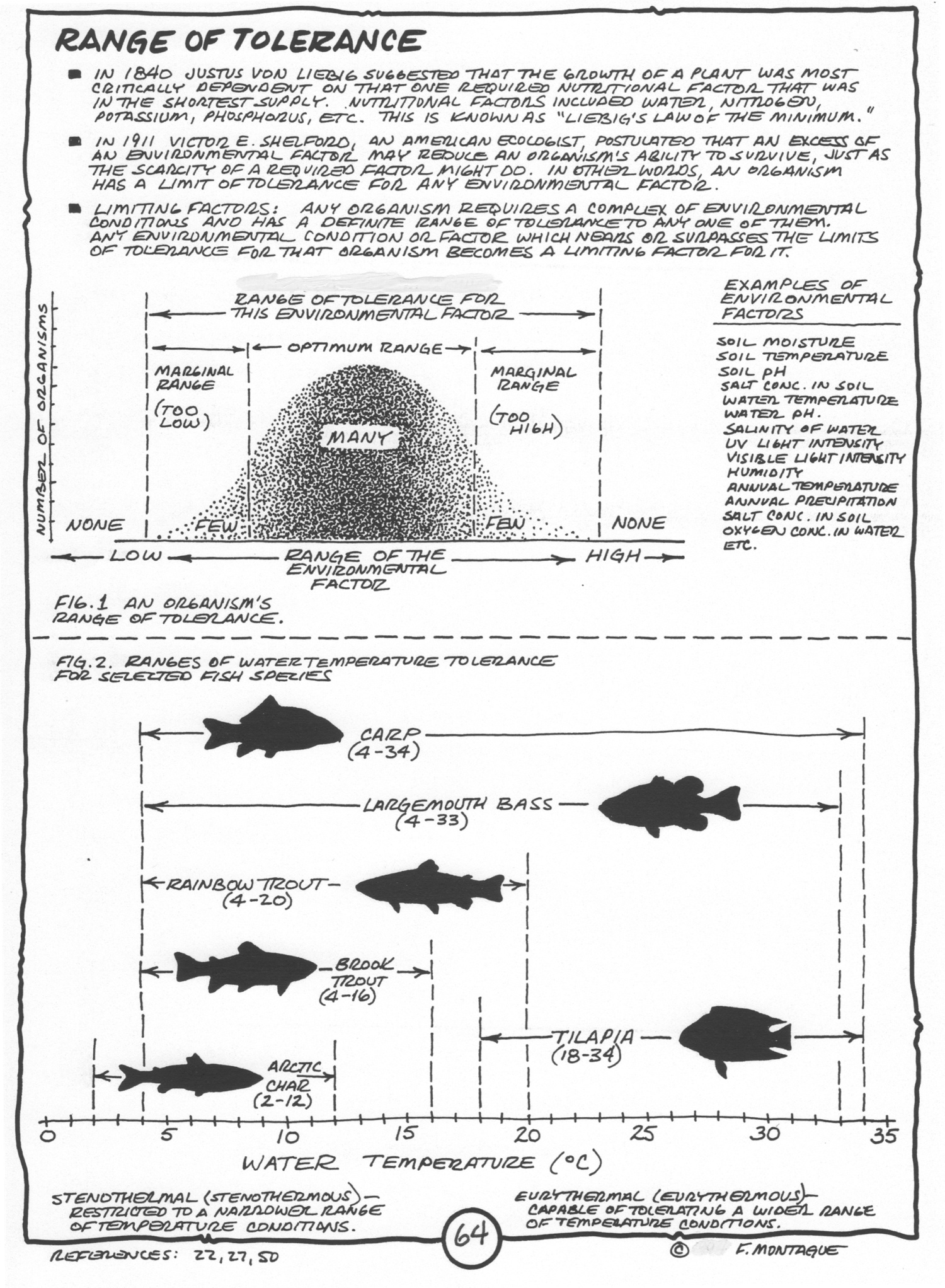The May 13, 2013 post presented a typical "range of tolerance" diagram that attempts to explain the way that different species thrive along specific portions of an environmental gradient.
In Nature (real life), of course, there are many environmental gradients (or factors). In Gardening: An Ecological Approach, I have added the logical extension to the explanation by adding more environmental factors. Now a landscape of "species nodes" begins to appear. One is depicted in the lower portion of the illustration from the book.
The impression for me is that there are many unique combinations of intersecting environmental gradients, each with a species thriving under those conditions.
Range of tolerance. © 2013 Fred Montague


